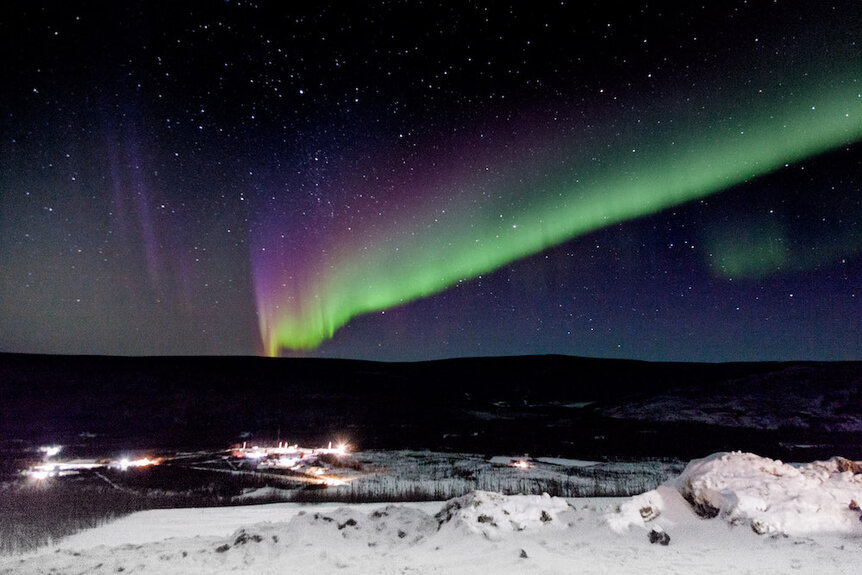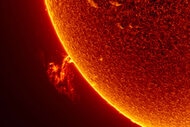Create a free profile to get unlimited access to exclusive videos, sweepstakes, and more!
Look to the Sky! 17 U.S. States Could See the Northern Lights This Week
Mark your calendars!
NBC’s Race to Survive: Alaska (streaming now on the USA Network!) pitted eight teams of skilled adventurers against one another on a multi-legged race across one of the most beautiful and dangerous landscapes on the planet. While there, teams had to endure extreme weather, rough terrain, wildlife encounters, and more. In exchange, they were witness to gorgeous sights including the Northern Lights (aurora borealis). They also had a chance to win half a million dollars.
If you’re looking to see the Northern Lights for yourself, there’s no need to sign up for a death-defying race across one of the world’s last wildernesses, you just need to look up later this week. As many as 17 states in the U.S. could see the most gorgeous lightshow on Earth this week.
The Northern Lights are Coming to a City Near You
Solar cycle 25 (the 25th 11-year cycle since we’ve been tracking) is nearing an explosive close, during which scientists expect an increase in solar flares and coronal mass ejections (CMEs). At present, it’s not possible to predict solar activity more than a few days in advance.
RELATED: 'Race to Survive: Alaska' Survival Guide: Hypothermia
A number of organizations including the National Oceanic and Atmospheric Administration (NOAA) and the Geophysical Institute at the University of Alaska, Fairbanks, track solar activity and provide forecasts ranging from 30 minutes to a few days. That’s all the warning we get.
Sky watchers are in for a rare light show Thursday July 13, when solar activity is expected to be High(+), according to the Geophysical Institute. Highly active auroral displays are anticipated, provided you have clear skies.
Usually, the aurora borealis is visible from parts of Canada, Alaska, and Scandinavia but they don’t typically get much closer to the equator. During periods of high solar activity, however (like at the peak of a solar cycle), geomagnetic storms caused by CMEs can be much more powerful than normal and light up the sky considerably farther south.
The July 13 storm is predicted to be visible across almost all of Canada and Alaska, as well as northern states in the continental U.S. including Washington, Idaho, Montana, North Dakota, South Dakota, Minnesota, Wisconsin, Michigan, New York, and Maine.
How Powerful Will the Solar Storm Be?
Solar storms (also called geomagnetic storms) are measured on what’s known as the Kp index. Scores range between one and nine, with anything under five considered mild and anything higher triggering a geomagnetic storm alert, watch, or warning. The July 13 storm is predicted to be a six on the Kp scale.
Auroral activity is expected to begin Wednesday July 12, visible low on the horizon in northern parts of the United States. It will really kick into gear on Thursday, becoming visible higher in the sky and at lower latitudes.
RELATED: Upcoming Solar Maximum Will Paint the Sky with Northern Lights
Because CME’s are carrying matter, instead of just light, they travel significantly slower than the speed of light, which allows us a little bit of warning when they’re headed our way. Usually, charged particles from the Sun get bounced away by the Earth’s electromagnetic shield, but when this particular blast hits the atmosphere, it will have enough power to travel down the electromagnetic field lines and deep into the atmosphere. There, they react with atoms of oxygen, nitrogen, and other gases and light up the sky like unbounded neon lights. It’s the sort of light show only the universe can put on, and we can’t wait to see it for ourselves.
Watch the entire first season of Race to Survive: Alaska, streaming now on USA.































